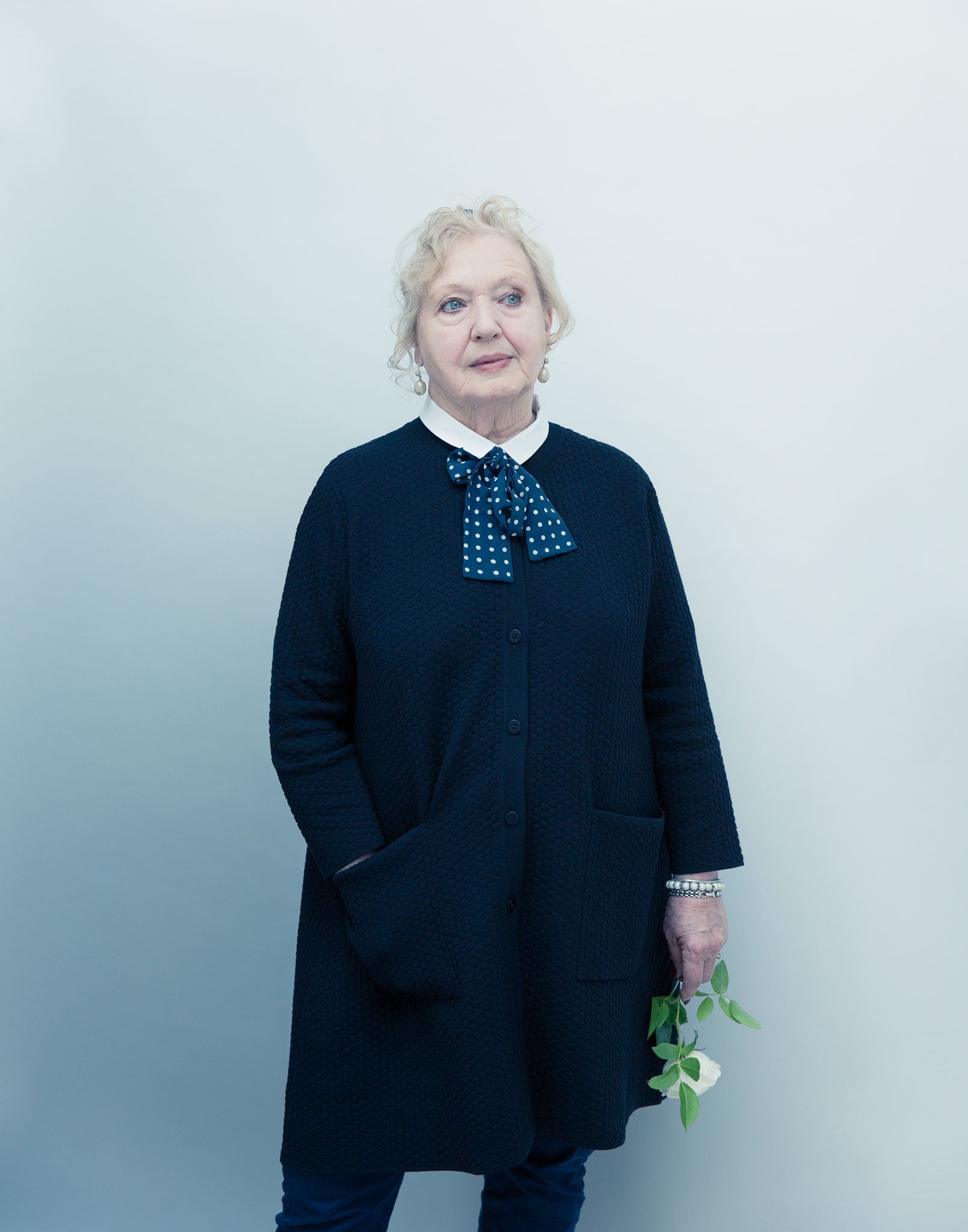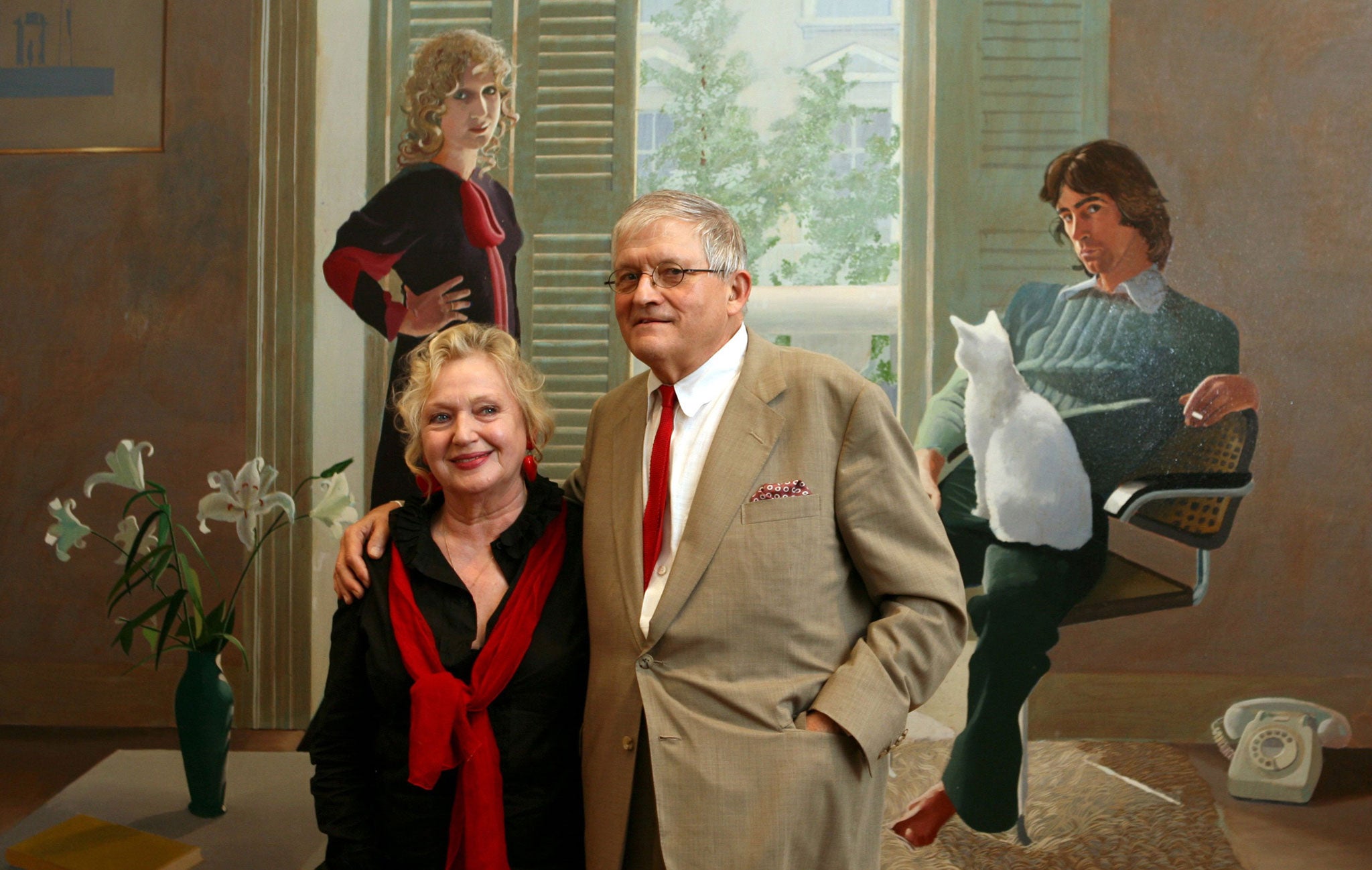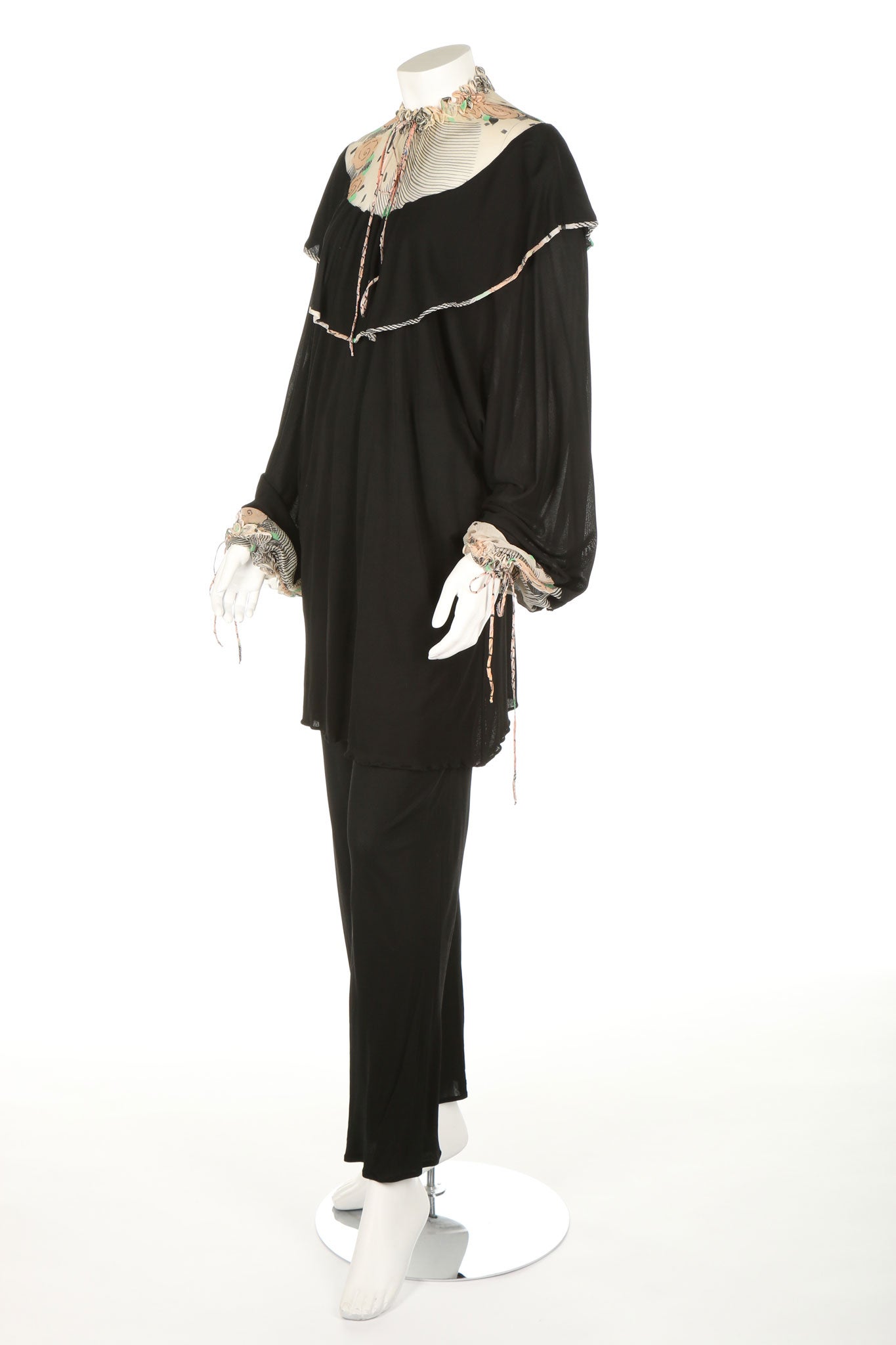Celia Birtwell interview: The designer on life with Ossie Clark and being friends with Hockney
Immortalised by David Hockney, and one half of an extraordinary creative duo, Celia Birtwell designed clothes that defined an era. Alexander Fury meets her

Your support helps us to tell the story
From reproductive rights to climate change to Big Tech, The Independent is on the ground when the story is developing. Whether it's investigating the financials of Elon Musk's pro-Trump PAC or producing our latest documentary, 'The A Word', which shines a light on the American women fighting for reproductive rights, we know how important it is to parse out the facts from the messaging.
At such a critical moment in US history, we need reporters on the ground. Your donation allows us to keep sending journalists to speak to both sides of the story.
The Independent is trusted by Americans across the entire political spectrum. And unlike many other quality news outlets, we choose not to lock Americans out of our reporting and analysis with paywalls. We believe quality journalism should be available to everyone, paid for by those who can afford it.
Your support makes all the difference.I don't think I've ever met anyone who's been painted by a "proper" artist before, let alone someone whose portrait came, in part, to characterise both the style of an era, and the style of an artist. A great artist, too. It's not the sort of thing that happens in 21st-century London, nor in the fashion industry.
My overriding image of the fashion and textile designer Celia Birtwell comes not from photographs of her today – which are nevertheless numerous, showing an almost picture-book ideal of the twinkly eyed, rosy-cheeked 74-year-old grandmother that she is. It comes from David Hockney's double portrait, painted between 1970 and 1971: Mr and Mrs Clark and Percy. Yes, that one, the one in the Tate.
At the time, Birtwell was Mrs Clark, wife of the fashion designer Ossie. Percy was the cat – although actually it was another cat. The one perched in Ossie's lap was called Blanche. But Hockney thought Percy made for a better title. He was right.
In the painting, Birtwell wears a dress co-designed by her and her husband. Theirs was one of fashion's most volatile but successful marriages. Success is an odd word to use, given that the couple divorced in 1974, and Clark and his business were declared bankrupt in the early 1980s. But their professional and personal partnership defined the 1960s and 70s, forming a blueprint for contemporary British fashion. That blueprint comprises spectacular shows, painstakingly constructed clothes, a global influence on other designers and, paradoxically, creative abundance shackled by financial reality. Ossie Clark and Celia Birtwell represented its first cresting wave – one that inevitably came crashing down.
So, it's strange to sit opposite Birtwell in the slightly fuddy-duddy enclaves of a rococo-stuccoed, duck-egg blue restaurant at Fortnum & Mason department store. She likes it, she says, because it isn't cool. Birtwell herself is cool – well, she is and she isn't. I'm sure she'd rather I said she wasn't, but her designs were and still are, preternaturally popular. The dresses she and Ossie designed were wrestled over – and 35 years later, a collaborative collection with Topshop in 2006 saw lines snaking along Regent Street, she proudly recalls.
In just over a week's time, another Birtwell collection is being made available to the public: her personal archive of Ossie Clark – clothing that spans the breadth of their creative and romantic partnership. "A lot of people have asked me why I'm selling it," she says. "The answer is – it's the right time." Birtwell is talking personally, but it also latches on to a Seventies mood that has been ebbing and flowing in fashion for the past couple of years, making all those Ossies look right for now. Birtwell herself has benefited – she worked with the house of Valentino on a pair of collections this year. "Do you think they asked me because I'm very Seventies?" Birtwell asks me, part annoyed and part, I suspect, curious.

There's plenty of curiosity in Birtwell. It's evident from the moment we sit down together: we begin with her asking me a question, rather than the other way around. She wonders where I'm from – the answer, Bolton, isn't too far from where she grew up. Birtwell was born in 1941 in Bury, Lancashire. Her mother was a seamstress, her father an engineer working with textiles. They moved to Prestwich, then to Salford, where Birtwell attended Salford Technical College, studying textile design. "I'm very pleased I come from the North; I'm very proud of that. My memories of Salford were a bit like Coronation Street – I knew the guy who started that, Tony Warren." She also crossed paths with L.S. Lowry, habitually wrapped in a giant trench coat in her college halls, and in 1959 first met the 16-year-old aspiring fashion designer Raymond Clark – who everyone knew as Ossie.
It wasn't love at first sight, but Clark and Birtwell were drawn to each other. "He was really ambitious, and very clever," Birtwell recalls, "and didn't need to be taught certain things. It was inherent in him. He picked up on the fact that my mother could make clothes. He came from Warrington, and he'd come and stay for the weekend… he'd pick up things, different technical things about clothes, how you put a collar in. She really thought he was talented."

Others agreed. After Birtwell moved to London, Ossie followed, and began studies at the Royal College of Art. Alice Pollock, an entrepreneur who had founded a boutique called Quorum, approached Clark to design clothes for her while he was still a student. Having worked in a variety of jobs – "I was a waitress, I worked in the wig department at the Aldwych, at the RSC" – Birtwell had returned to her training in textiles, creating upholstery fabrics for Heals in 1963. She had also moved in with Clark, marking the start of a love affair that would lead to marriage in 1969 and the birth of two sons. In 1965, after Clark graduated from the RCA, they also began to collaborate professionally, Birtwell designing the textiles for Ossie's Quorum designs. "At first I did one, because that was all they could afford. And it just blossomed from there," she recalls now, with modesty.
What blossomed was one of fashion's richest collaborations – Birtwell's prints providing the perfect accompaniment to Clark's fluid, Thirties-influenced designs. Those, in turn, influenced others – Yves Saint Laurent visited Clark's shops and immediately began creating clothes in a similar vein; when his clothes were exported to American department stores, New York designers ripped them off mercilessly. Birtwell recalls designing her fabrics at home and bringing them to Clark in his studio. "I'd throw the fabrics on the table then disappear. Then he'd bring me something," she says.
While Birtwell herself wasn't interested in the construction of clothes, Clark was a wizard. "He could have been an architect – he was very good at three-dimensional shapes. I remember Hockney once said to me that he saw him make a pair of gloves, just cutting as you see it [with no pattern]. All that knowledge was just part of him."

It was at the height of their collaboration – the same year that they staged a riotous fashion show at the Royal Court Theatre, where the models included Penelope Tree, and among other people in attendance were David Bailey, Michael Chow, and Paul and Linda McCartney – that their friend David Hockney painted the couple in that dual portrait, a work that that has been compared to Van Eyck's Arnolfini Portrait. Birtwell was pregnant with their second child, George.
Hockney's picture, like Van Eyck's, is rich with double-meaning – the open window signalling departure, the cat perched on Clark's lap symbolic of the libertine. Clark's erratic behaviour and drug addiction put a strain on the marriage which it could not survive. In its aftermath, Birtwell moved to Los Angeles at the invitation of Hockney, for whom she was a paid model for five years. "I went to stay with him in the 1970s, when my kids were very young; I spent three months in Malibu," she recalls. "We had quite an interesting relationship because I met him really through Peter Schlesinger [Hockney's then-boyfriend]. He would never have really got to know me had it not been for Peter coming round to see me after a party at night; or David had gone to a party, so Peter would come and sit with me and my kids. So he had to get to know me – and we struck a chord. I'm very fond of him. I make him laugh. I think he sees me as a bit ridiculous. I'm fine with that! It's probably true! He likes teasing me… we've kept our friendship going for a long, long time."
Hockney has completed a series of portraits of Birtwell. She has one herself, and the latest was undertaken in May last year. "I'm very honoured that he likes looking at me, and drawing pictures of me," she says. It was also Hockney who encouraged her, in the early 1980s, to begin designing fabric again.
In 1984, Birtwell opened a shop in Bayswater, creating fabrics for the home. Why for the home, I ask, rather than for fashion? "I think it's when I didn't have Ossie," Birtwell says. "I mean when I worked with him… you couldn't really get better." There's a hint of affection still, but not nostalgia, nor pain. She mentions Ossie frequently, when discussing her life and work – as might be expected of two creatives whose work was so entwined. "I can get a bit sort of sentimental," she shrugs, not stoic but certainly pragmatic. "But I'm not going to." Following Clark's violent and untimely death in 1996 at the hands of an ex-lover, Birtwell staged the first retrospective of his work – including, of course, their collaboration – at Warrington Museum and Art Galleries; it opened in 1999. "I'm very proud of it," Birtwell says, "but I mean, nobody went to Warrington!" But in 2003 the V&A followed suit – their homage igniting a revival of Ossie Clark that continues to this day. Birtwell's wardrobe formed a crux of the exhibition.

That wardrobe is what Birtwell is auctioning later this month, with the London fashion specialists Kerry Taylor Auctions. There are a few of the signature slipstream Ossie flower-child dresses, splashed with Birtwell's stylised foliate prints. But not as many as you'd expect. "I've not got a lot of chiffons, they've walked over the years," she recalls, wryly. "And I don't normally wear my prints. I think they wear me, a bit." She grins. "It's like a carpenter who doesn't have any shelves, I suppose."
Nevertheless, Birtwell's collection is exceptional: there are sweeping examples of Clark's tailoring – snakeskin jackets, intricate print blouses, including one that Mick Jagger cross-dressed in, and the dress, dubbed "Heavenly Twins", that Birtwell wore in that seminal Hockney portrait. There are a few others previously immortalised in Hockney's back catalogue, too, if you look hard enough. "It's another episode of my life," Birtwell comments, a little wistfully. She leans forward, conspiratorially, and confesses candidly. "It's not a brilliant collection – I'm only telling you this. Maybe I'm too close to it. The artistry, and the workmanship, and the tailoring… certain pieces I think are to be respected."
Birtwell is too close to it. The selection of clothes she's auctioning – almost 50 lots – are more than just great clothes by a great designer. They are an unparalleled summary of a cultural moment captured in cloth – Swinging London made material. The auctioneer overseeing the sale, Kerry Taylor, calls them, simply, "extraordinary". "Hopefully [they'll be] enjoyed by a lot of people – put into a glass case to be looked at by many, rather than a wardrobe owned by one," says Birtwell. "But you can't dictate that."
The one thing Birtwell can dictate today, however, is her own legacy. She recalls one collaboration which was, in her view, simple-minded: "I told them to bugger off."

Her work with Valentino seems far more to her taste, although, in a perfectionist aside, she comments that "the red isn't quite the right red." Her complex graphics – florals, butterflies and a "funky dragon" – writhe around a selection of pieces in the house's Pre-Fall and autumn/winter collections. Moreover, the house named her a "muse" for the collection, alongside Gustav Klimt's lover and model Emilie Louise Flöge, although she wasn't around to help them realise the clothes. "It was an honour to collaborate with Celia Birtwell," says Maria Grazia Chiuri and Pierpaolo Piccioli, the duo who run the label. "As an iconic artist and muse, she has always had a delicate sensuality and distinctive approach to blending art from everyday life into her own aesthetic." No mention of the 1970s, see.
I can't help but wonder if Birtwell has given up all of her Ossie (the proceeds from the sale are intended to create an inheritance for her grandchildren). As a clothes-hoarder myself, I find the notion unbearable. "I've only kept the dress that I wore at the show at the V&A – that I was rather moved by," says Birtwell, of a black lace and silk dress created by Clark's own hands. "My memory of him, my thank you to him, was that dress. So I will keep that one." She smiles, nods, and for a moment Celia Birtwell looks just like Mrs Clark again, straight out of that Hockney.
The Celia Birtwell Collection is part of the Passion for Fashion sale on 23 June 2015, at Kerry Taylor Auctions, London SE1; kerrytaylorauctions.com
Join our commenting forum
Join thought-provoking conversations, follow other Independent readers and see their replies
Comments